
Rediscovering Japan

Rediscovering Japan
Travel (Jomon Sites of Aomori Prefecture Part 3 (Sotogahama/Aomori)

by tomizuta
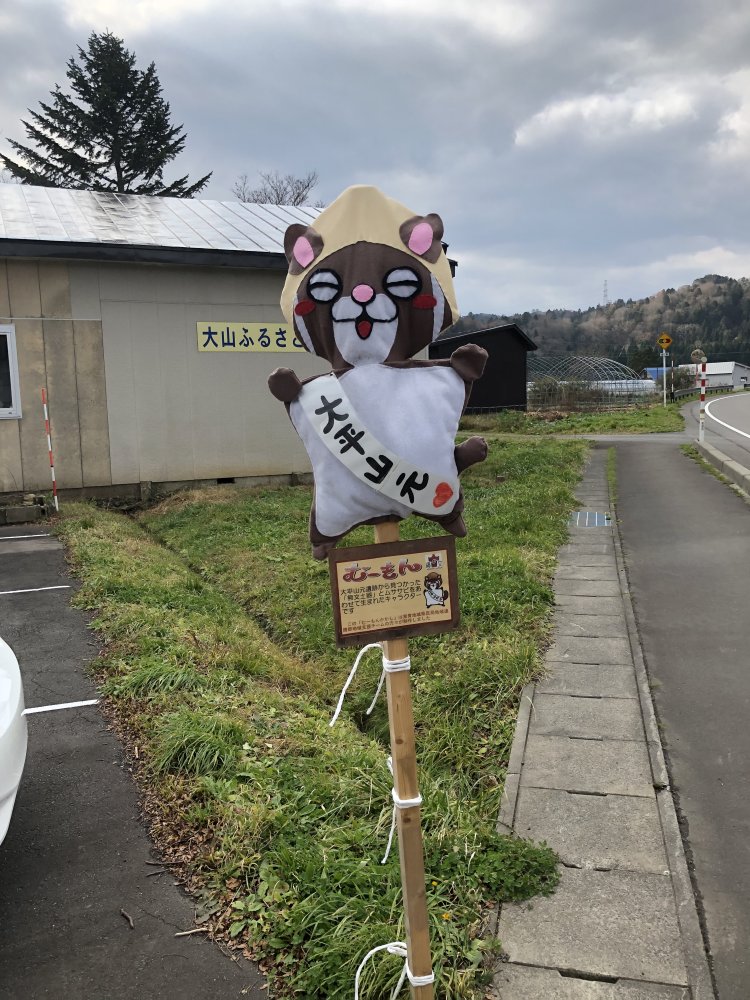
We were looking for signs to the Odai Yamamoto Jomon site, when we noticed a small history museum by the road. This was the Oyama Local History Museum converted from a former elementary school discontinued in 1999.
On the third and last day, we set out in the morning to visit Aomori Prefectural Local History Museum. To our dismay, we found that the museum is closed indefnitely for seismic retrofitting. We made a quick decision to visit the Odai Yamamoto Archaeologocal site in Sotogaura Town about thirty kilometers north of Aomori City on the east coast of Tsugaru Peninsular. The site is situated about five kilometers inland and on a river bank about 26 meters above sea level. This trip to Aomori had made me aware of the existence of this site from where fragments of the oldest pottery in Japan had been excavated. In 1998, radiocarbon dating of carbonized material attached to the fragments (evidencing cooking) suggested they were made around 14500 B.C. It was a historic find, as previously the start of the Jomon period was thought to be around 10000 B.C.
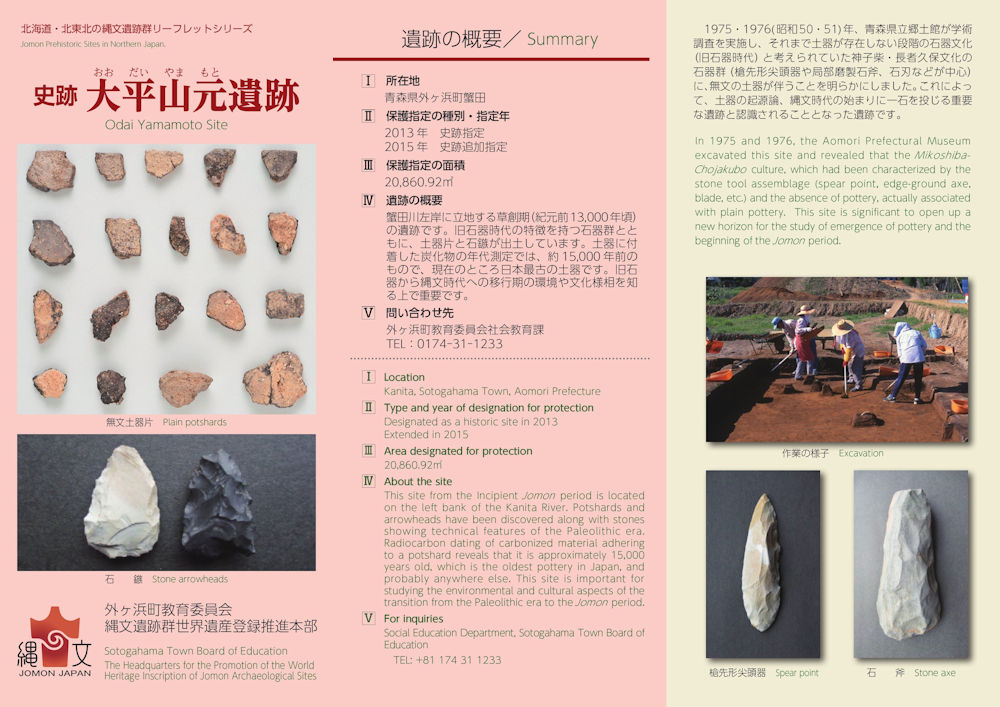
The pamphlet of Odai Yamamoto site. As told by the pamphlet, "This site is significant to open up a new horizon for the study of emergence of pottery and the beginning of the Jomon period."
We were looking for signs to the site, when we noticed a small history museum by the road. This was the Oyama Local History Museum converted from a former elementary school discontinued in 1999. We parked in the car park and entered the museum and was welcomed by the curatress. There was no admission fee. She guided us to the exhibition room displaying some of the artefacts excavated from the Odai Yamomoto archaeological sites. It was a small room which doesn’t take long to browse. Although I understand that the arrowheads belong to the oldest type Mikoshiba Style (the name is derived from the Mikoshiba site in southern Nagano Prefecture), it is very difficult for an amateur to distinguish the style from other later sites. The stone tools are made from local shale, one of the reasons for an early settlement in this area. Fragments of pottery were also on display. So few fragments have been found that it was not possible to recreate the original features. The pottery did not have any cord pattern (Jomon), unlike typical Jomon pottery from around 3000 B.C. There were some description in English, obviously in preparation of the possible designation of the site as a group of northern Jomon sites as a UNESCO World Heritage. Oddly the English description did not fully match the Japanese description.
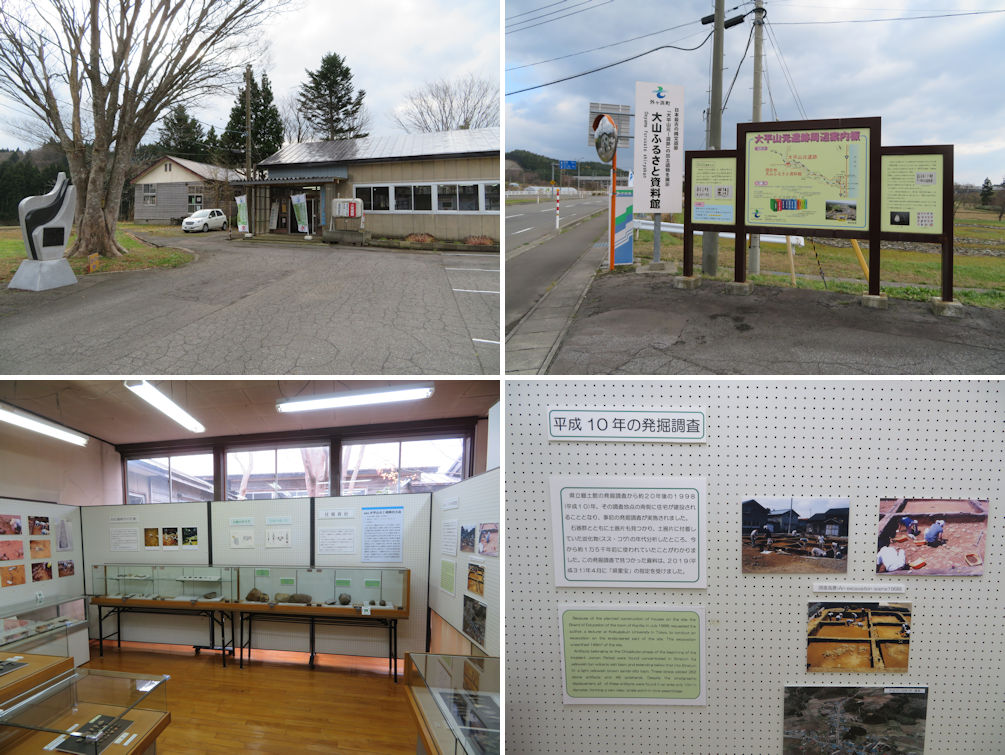
The exterior of the museum. We were the only guests. (upper left) There were some informative signboards in the corner of the car park. (upper right) The displar room was quite modest. (lower left) There were few English descriptions. Oddly, one English description did not fully match the Japanese description. (lower right).
The curatress who had left us to browse the displays had returned. She suggested that we pay the other exhibition rooms displaying objects related to agriculture, forestry, fishery and local life, which we did. The rooms and corridors were more interesting for me, reminding me of the wooden school I went to as a child. The curatress gave us directions to the archaeological site.
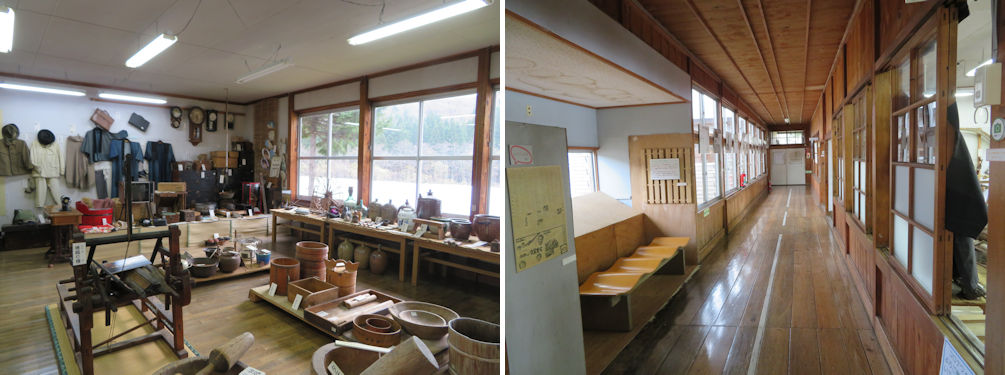
The room related to local life looked like an antique shop. (left) The rooms and corridors were more interesting for me, reminding me of the wooden school I went to as a child. (right)
The archaeological site was easy to find on the opposite side of the road. Work to convert about 20,000 square meters of land in the area designated as a national historic site in 2013. Most of the area was a residential area which is gradually being converted to a park to preserve the site as well as provide information to visitors about the site and its historic importance evidencing the transformation from the end of the paleolithic/glacier era to the neolithic/Jomon era. The area where the markless earthenware was excavated is now being developed. At present all that can be seen is a large smoothly flattened earth mound. It was quite an interesting visit, but I am sure it will become far more interesting once the development is completed.
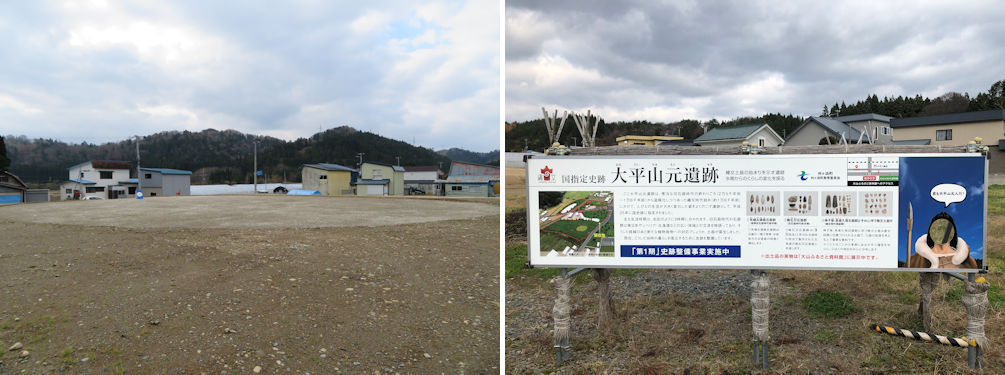
At present all that can be seen is a large smoothly flattened earth mound. (left) The signboard in front of the preserved area, which informs visitors that Phase 1 of the preservation of the site is being implemented. (right)
We left Odai Yamamoto for the Sannai Maruyama Jomon site, which is one of the four Jomon sites designated as a national special historic site alongside the Togariishi Neolithic site (Nagano Prefecture), Oyu Stone Circles(Akita Prefecture) and Kasori Shell Mound (Chiba Prefecture). The site is located about seven kilometers south and inland of Aomori City and Mutsu Bay on a river bank along Okudate River flowing into Mutsu Bay and at an altitude of twenty meters above sea level. Although the existence of the site was known since the Edo era, it was not until 1992 that a large scale excavation took place on the occasion of an expansion plan of the nearby Aomori Athletic Grounds. The excavation revealed together with massive earthenware, graves and dwelling remains, an extensive settlement covering 20,000 square meters from around 3500 to 2000 B.C. Aomori Prefecture decided to preserve the area and the site was designated as a national specific historic site in 2000.
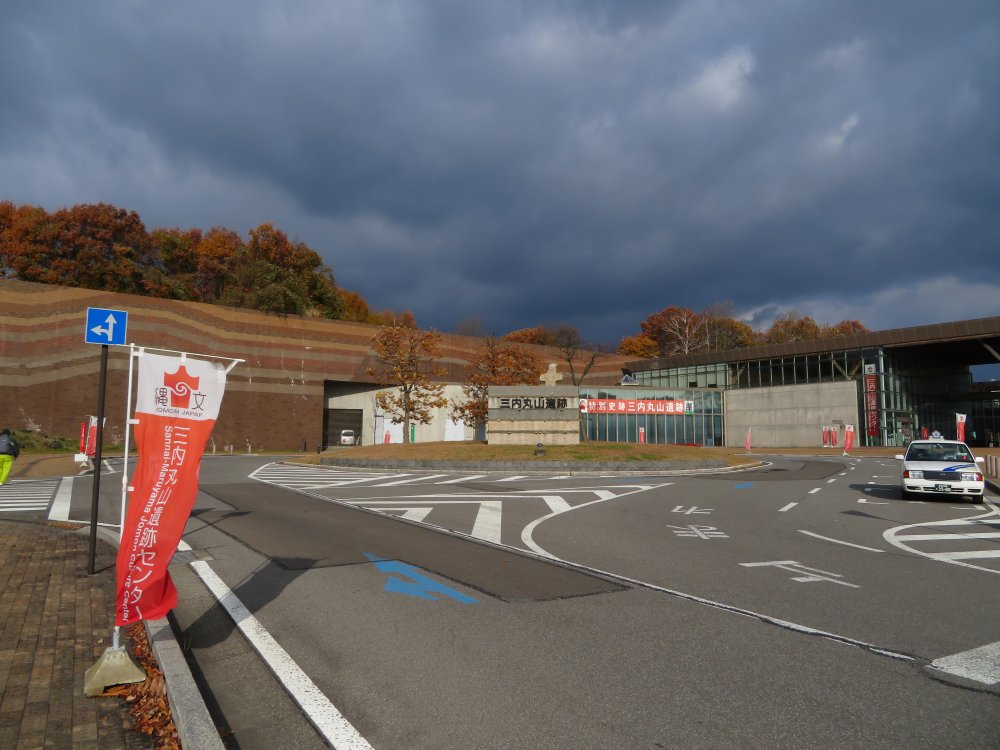
Entrance to the Sannai Maruyama Jomon Culture Site. The site lies behind the museum building.
We paid the admission fee of 410 yen per adult and entered the Jomon Jiyuukan
(meaning time travel facility). We learned that the entrance to the Jomon
site was inside the building. We noted that guided tours were running every
hour, but decided to explore the museum and its displays first to gain
some advance knowledge. We watched the introductory audio visual which
was quite good in that it gave us insight on what to see at the site, such
as the nuts storage area in the streams where nuts were stored in water
to reduce tanginess and bitterness. We then browsed the displays which
included the flat shaped doguus unique to the site compared with more human-shaped
doguus found elsewhere and an also unique woven Jomon basket.
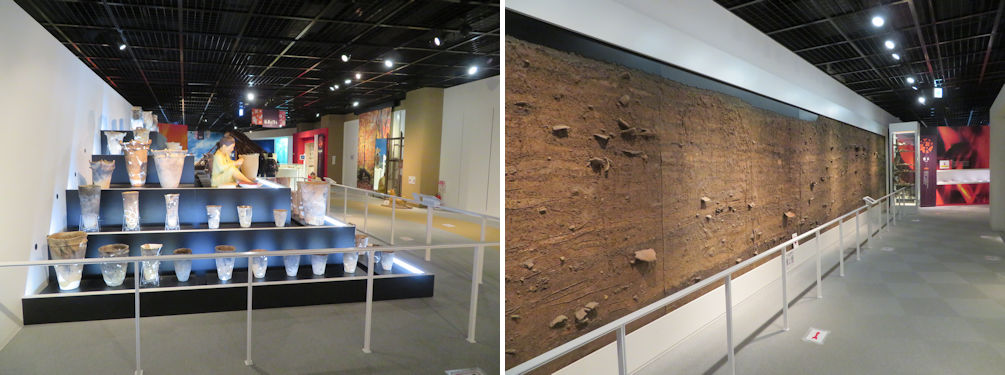
The museum houses some interesting displays including some of the many excavated pottery (left) and a cross section of the site soil. (right)
We were the first guests at the gathering point but were joined by half a dozen visitors before our guide appeared to take us on the tour. I asked if there were English speaking guides, to which he replied in the positive, adding that there was very little demand with the Covid 19 pandemic. We went out to the Jomon Village behind the Jomon Jiyuukan building. I was very excited as we went down the slope into the settlement valley, commanding a bird’s eye view of the vast settlement area.

I was very excited as we went down the slope into the settlement valley, commanding a bird’s eye view of the vast settlement area..
The discovery of Sannai Maruyama had completely changed the understanding of our Jomon ancestors. Instead of the previous view of a nomadic life chasing food, people here had settled for over 1,500 years. Whereas settlements in other areas ranged from several to two to three dozen, it is thought that at peak there were about 100 dwellings and 500 people. Only slightly over 10% has been excavated but already the number of artefacts found have surpassed the total number of Jomon objects found in all of Aomori Prefecture with its many Jomon sites.
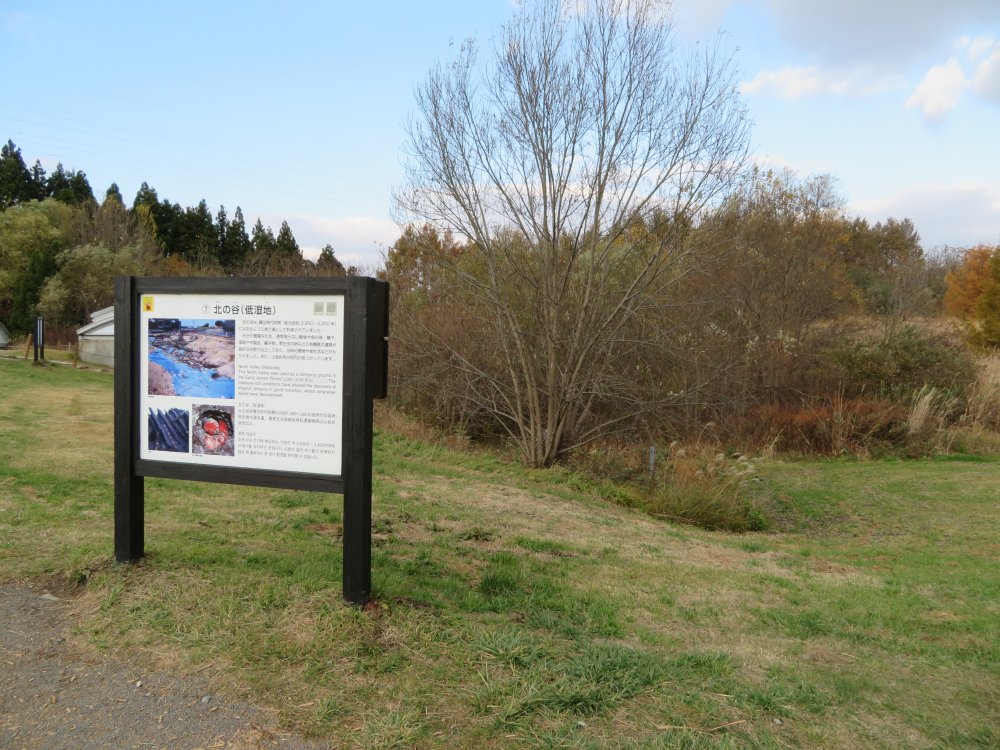
The site of a dumping ground. The description informs that it was used between 3900 to 3300 BCE and that the moisture-rich conditions allowed the discovery of organic remains in good condition which otherwise would have decomposed.
Our guide first took us to the northern peripheral of the settlement which was the graveyard of the settlement. I pricked up my ears as our guide informed us “Take a look at this road heading towards the sea. It is 20 meters wide and running 370 meters. The graves are on both sides of the road. Perhaps they were so arranged, as to welcome the Jomon settlers coming back to the village with their catch of the day.”
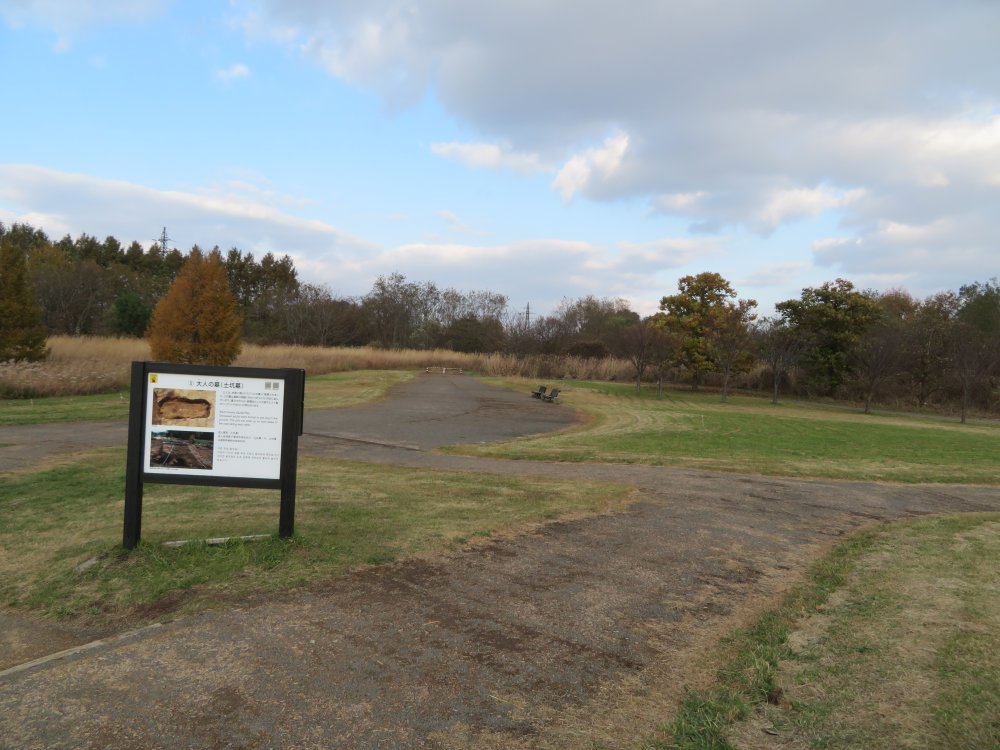
The ancient road heading towards the sea, which is 20 meters wide and runs 370 meters. The display board tells us that the graves are on both sides of the roads.
The main feature of Sannnai Maruyama that appears on TV screens ever so often is the reconstructed six-pillar building support. Before viewing the reconstructed pillars, we were guided to a building housing two lines of three pillar holes with a diameter of approximately two meters. The pillars were from chestnut trees with some portions still remaining at the bottom. All holes were arranged at intervals of 4.2 meters. We learned that most dimensions of erected buildings were in multipliers of 35 centimeters, leading us to believe that a common measurement must have already existed. The pillars have been dated to around 2600 B.C. We then went out to view the reconstructed six-pillar building support. The roof has not been reconstructed as the features and purpose of the building is still unknown.
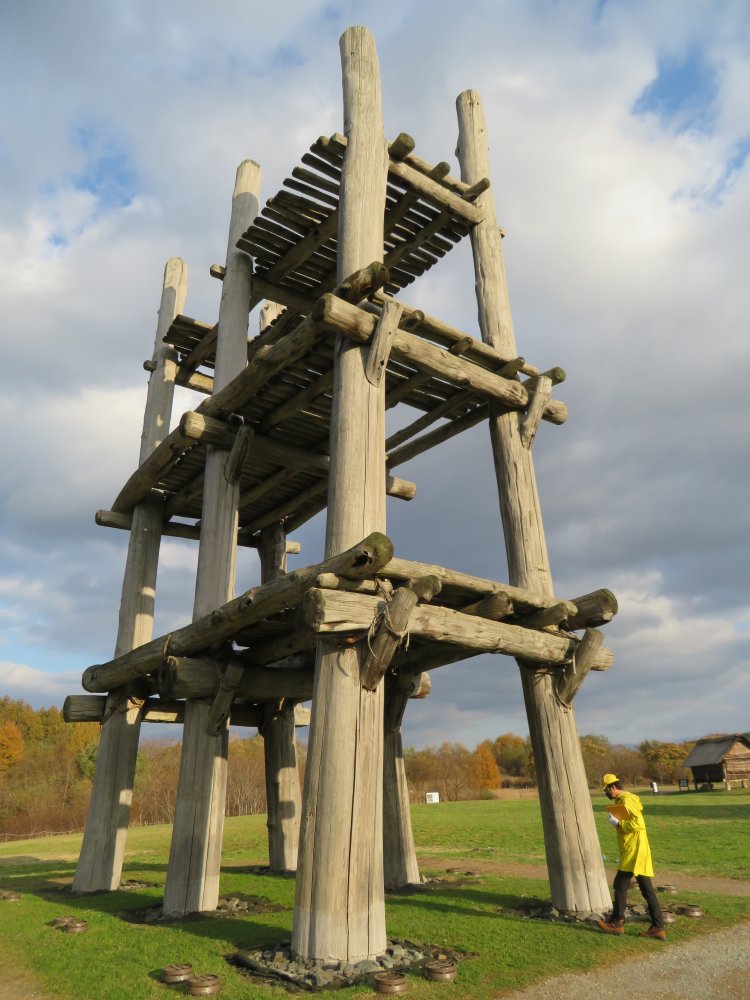
We then went out to view the reconstructed six-pillar building support. The roof has not been reconstructed as the features and purpose of the building is still unknown.
The guided tour ended at a large reconstructed building 32 meters long and 10 meters wide, which is assumed to have been a gathering place or workshop built around 2800 B.C. It was quite intriguing that the Jomon ancestors had developed a building technology to erect a building of this size.
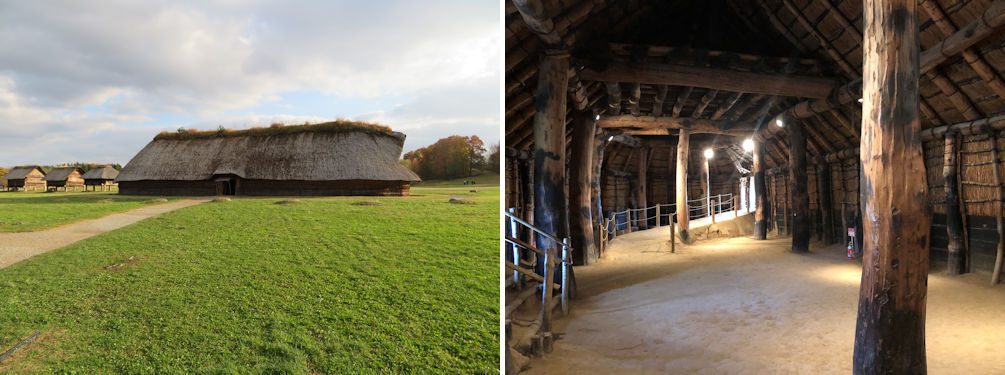
The large reconstructed 32 meters long building (left) and its interior (right).
There’s plenty to see in the valley. We spent some time visiting the restored dwellings on our way back to the museum. We had seen quite a few of these types of reconstructed dwellings at other Jomon sites. The visit to Sannai Maruyama was fascinating in particular to learn “that Jomon people were actively engaged in the natural surroundings with Japanese beech and other deciduous broad-leaved trees to maintain and manage the natural resources, and that they established an artificial ecosystem called Jomon satoyama (community-based woods) consisting of useful trees such as chestnuts, walnuts and lacquer trees to sustain their lives.”(https://jomon-japan.jp/en/jomon-sites/sannai-maruyama/) We ended our three-day visit to the Jomon sites in Aomori Prefecture and headed back to Aomori Airport.
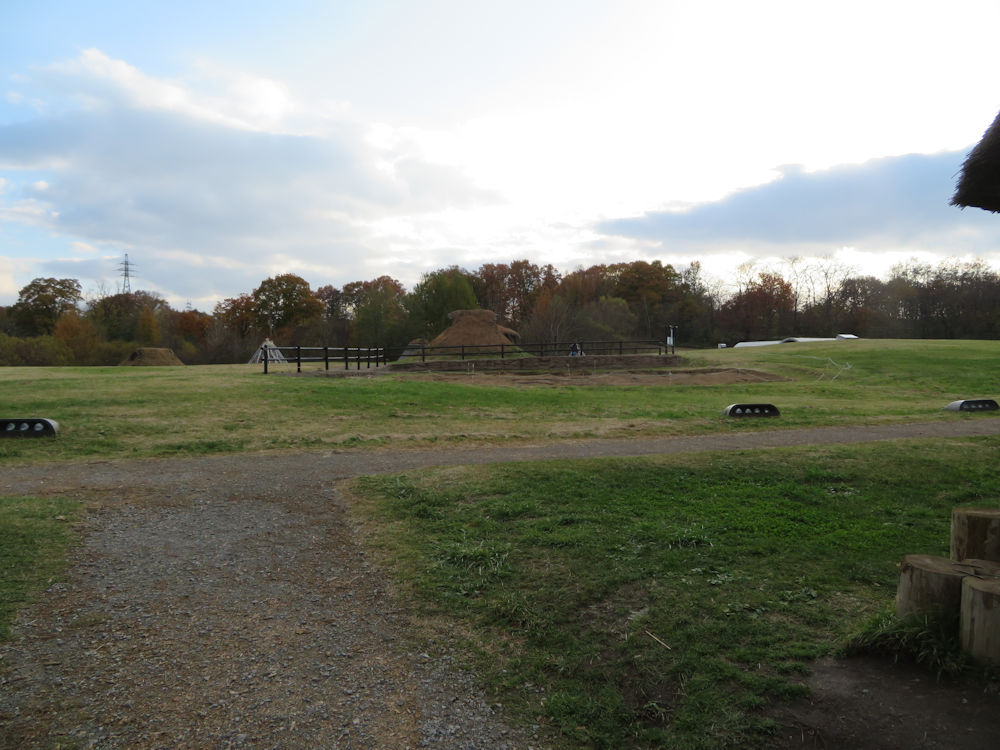
There’s plenty to see in the valley. We spent some time visiting the restored dwellings on our way back to the museum.